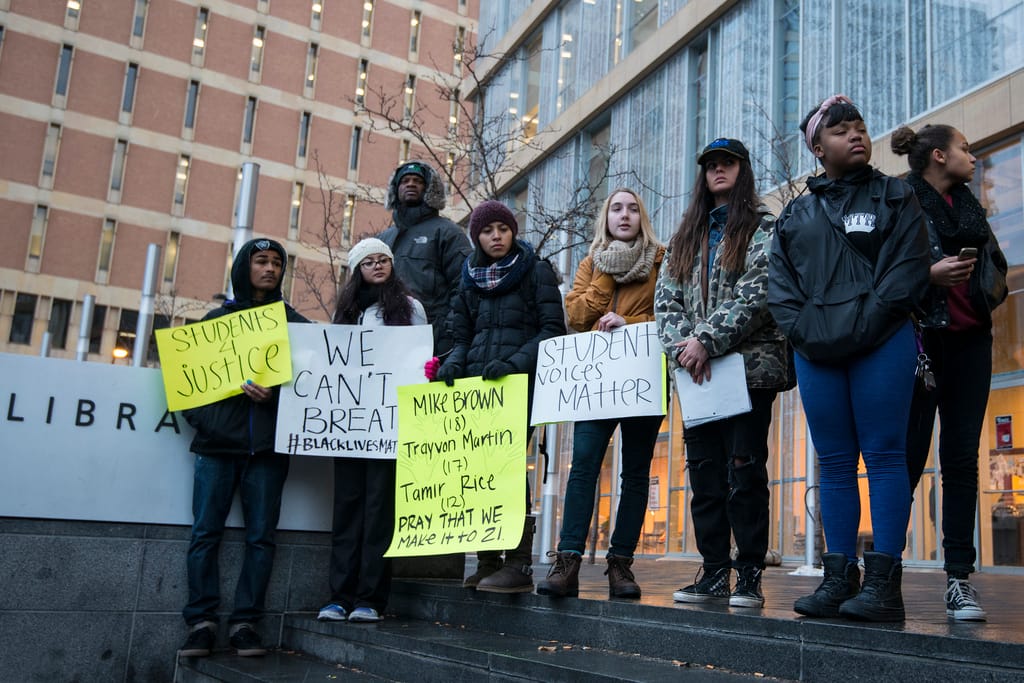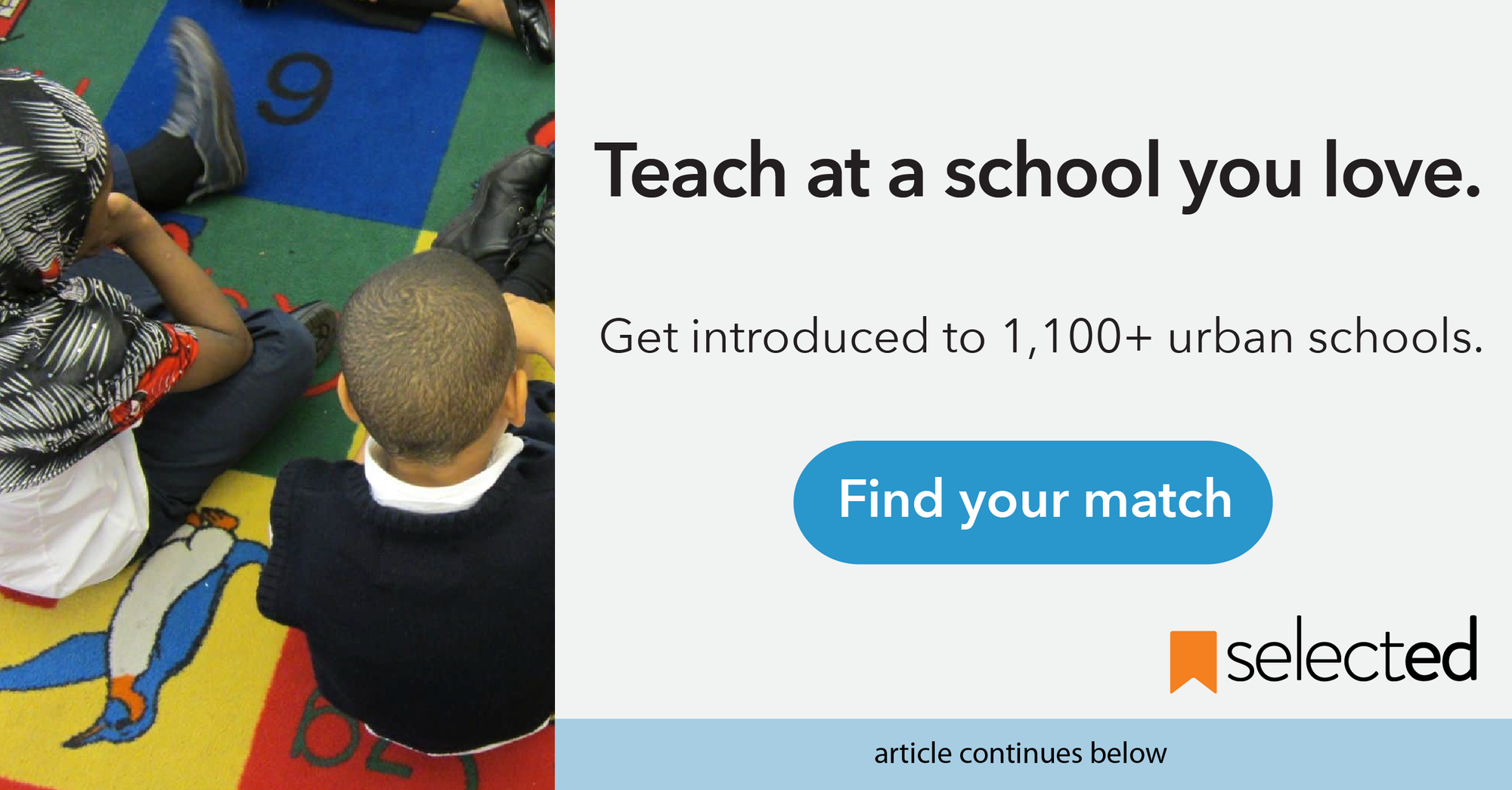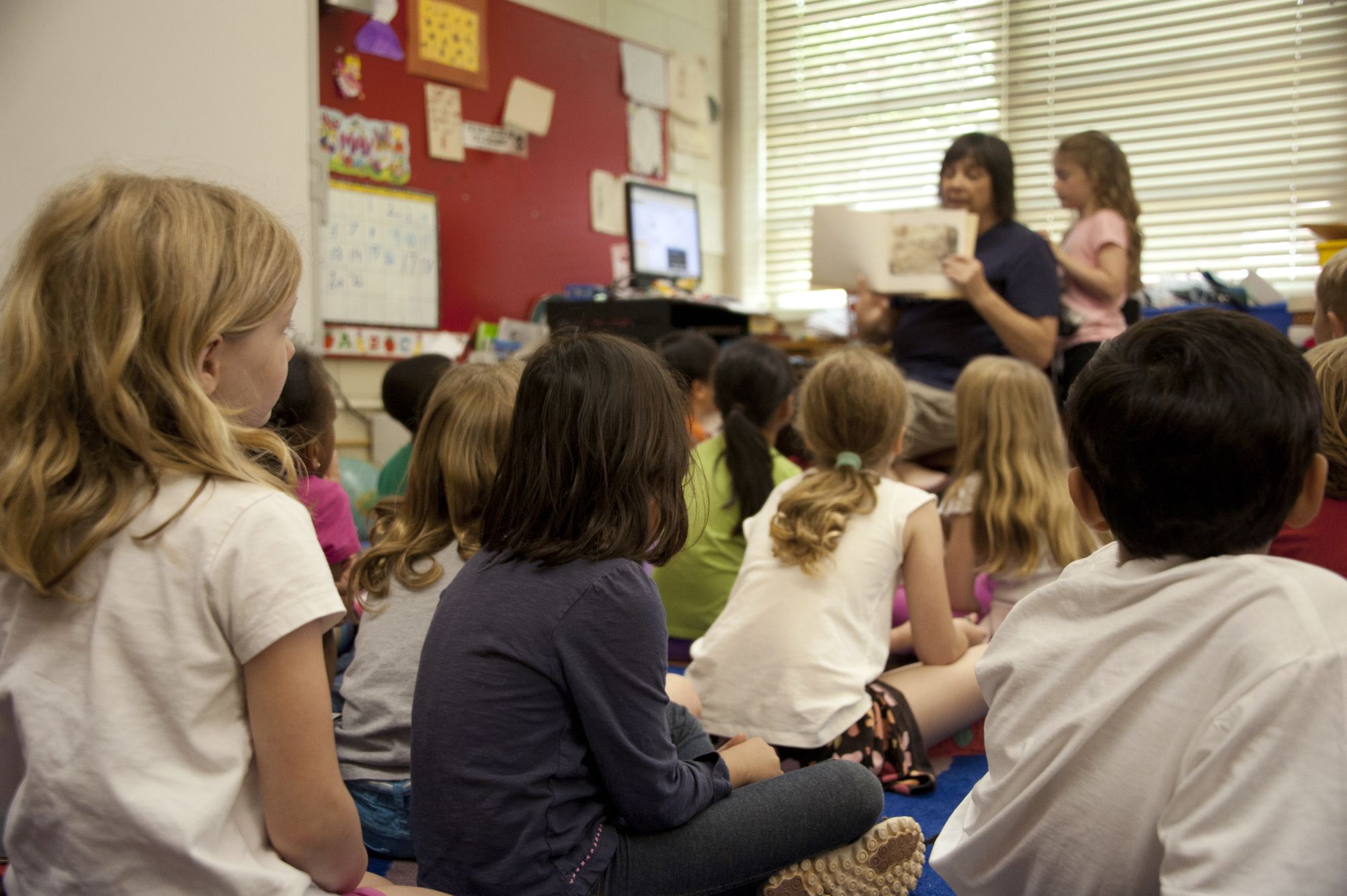Difficult Conversations in Difficult Times Pt. 1: How to Talk About Race at School
To honor Black History Month, Principal Sean Larry Stevens gives his perspective on how to have difficult conversations about race and racism with kids.

It is no secret that we live in a society that has a distorted view of oppression and racism. After the election of President Barack Obama, America moved to a place where we became “color-blind” and exculpatory phrases like “I see people, not race,” were ingrained in our everyday nomenclature when discussing race and politics.
Oftentimes, especially through media, our country is exposed to a single story. So many of us believe we live in a post-racial society—we believe phrases like “all men are created equal” are the foundation of our constitution, and that American society is inherently fair. However, these idealistic viewpoints are not realistic of who we are as a nation. They prevent us from recognizing systemic racism, or rather, systems and policies that subjugate people of color. Systemic racism is alive in practices such as mass incarceration, gentrification, and the school to prison pipeline, which reinforce the inequity that permeates our society, trickles down into our communities, and ultimately affects our schools, students, and mindsets.
For the next few weeks, I’ll be posting my thoughts on how to work against systemic racism as educators, and how we can talk about race in a way that helps kids of color advocate for themselves in troubled and confusing times. This week, I’ll focus on the concept of systemic awareness and how to develop it.
Systemic awareness is the process through which one develops critical consciousness around a range of diverse issues, policies, and systems that impact our world. The development of systemic awareness, particularly for those who are most oppressed, is imperative. As you work to become systemically aware, you push yourself to be a critic of society and give yourself the tools to evaluate the world through a multi-perspective lens and thus promote change.
How to develop systemic awareness
While there is no cookie-cutter method for developing systemic awareness, there are ways we can push ourselves to be more politically conscious. My process of developing systemic awareness is to ask questions: whenever I listen to media stories or hear about a policy that will impact a particular group of people, I try to look past the more overt forms of oppression and think deeply about the intentions of people shaping decisions in our nation and the impact that these decisions will have on our country holistically. This thought process allows you to see both sides of any media story or decision that is made.
Additionally, when watching the news, I challenge myself to think about whether the media coverage is systemically aware and whether it presents a multi-perspective representation. For example, when I hear about stories that highlight fewer men of color graduating from college, I immediately think about how our school districts are addressing the problem and what systems we have in place to support our students. It’s easier to think that the problem is a lack of investment or dedication to education on an individual basis but in actuality, it reflects a larger societal issue.
When I hear policymakers present new laws and initiatives, I ask myself if it takes into account all people and not just a subset group of individuals that may benefit from said policy –- especially if the benefit is catered to a specific group of Americans that have historically been privileged. When you push yourself to think about incarceration rates, immigration policies, disparities in healthcare and other contentious issues from all angles, you become more systemically aware about how decisions will affect all people in our country.
Why we need to talk to our students about systemic awareness
Pushing your students to be systemically aware on a range of diverse issues will not only pique their interest and make them more politically conscious, it will also push them to be critical thinkers that are able to evaluate society through a multi-perspective lens. Presenting them with systemically aware content which highlights practices that lead to racial disparities and inequity will open their eyes to the world around them.
As a principal, it is my moral obligation to prepare students for the harsh realities of the “real world.” As an educator of hundreds of African American and Latino students who are going to graduate from high school and enter a world that doesn’t necessarily reflect how they look, it is my job to ensure they are critically conscious.
How to get students thinking about systemic awareness
First, they have to understand their own historical and social context and what that means within our society. Once they continually begin to question how they see the world and how the world sees them, they can then move to developing systemic awareness and critically analyze how policies and societal structures impact their lives.
For educators, every moment you have with students is an opportunity to push their thinking about the unjust practices that govern our society. It could be as small as watching CNN news, selecting a particular story and asking students, “how has our society’s policies contributed to this news story? Why have policymakers decided to get involved or what systems are in place that directly impact what’s happening?”
Simple questions that get students to think about the intersectionality of race and place in America are the smallest and most impactful step to developing systemic awareness. Ultimately, once they begin to view the world through a multi-perspective lens, they can take action to be the change they want to see in the world.
Next week, I’ll focus on the concrete steps I take to help students develop this lens. With this series, I hope to give you both framework for developing systemic awareness and specific activities you can use to support your students. Developing this perspective is a difficult process -- but I hope a few of the practices I use can help you and your students develop the tools to work against prejudice.
*Note: This is Part 1 of a two part series. To read about the practices Sean uses to help his students and staff grapple with racism and inequity, read part 2 here.
Cover image: Minnesota High School students protest racism and police brutality; photo by Fibonacci Blue for CCBY use
About Selected
Selected helps teachers find jobs at schools they love. We offer a free school matching and career support platform for teachers that connects them with 1,100+ PK-12 public and independent schools in urban metro areas in the Northeast and West Coast, including New York City, NJ, CT, Philadelphia, Washington DC, Boston, and Los Angeles. Create a FREE profile and start speaking with hiring schools immediately!





